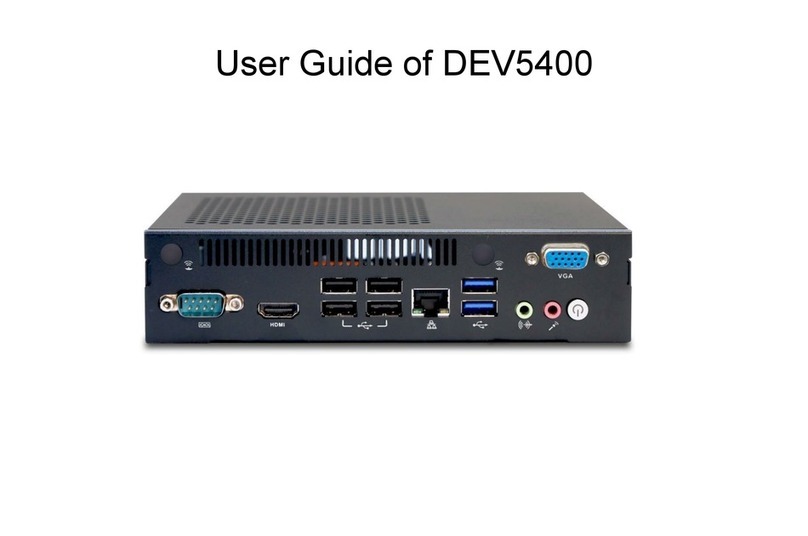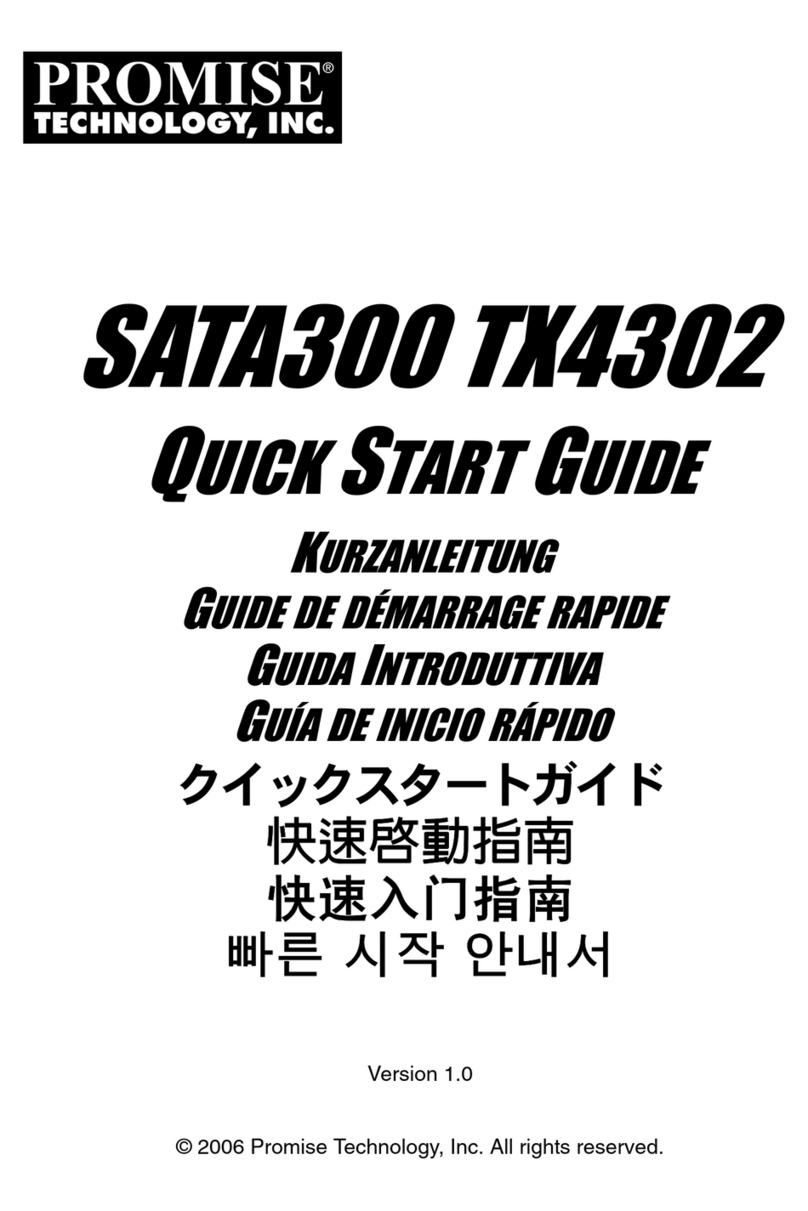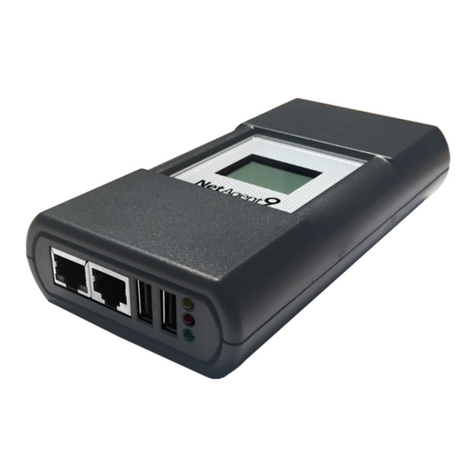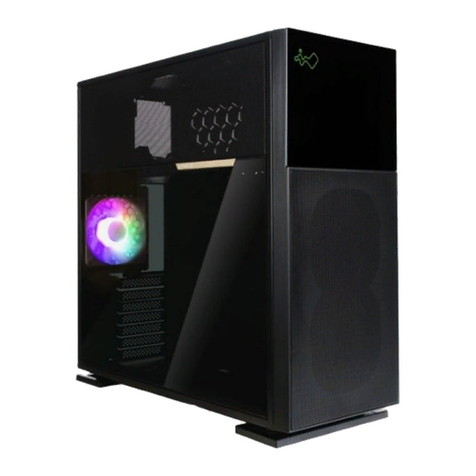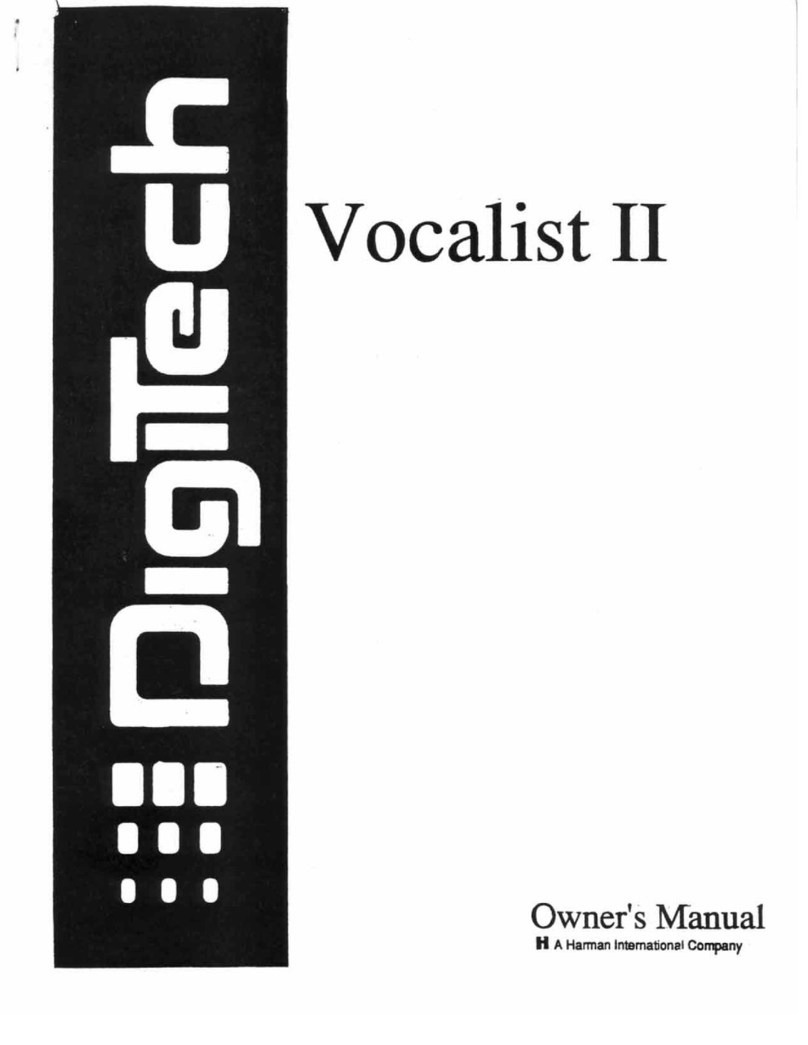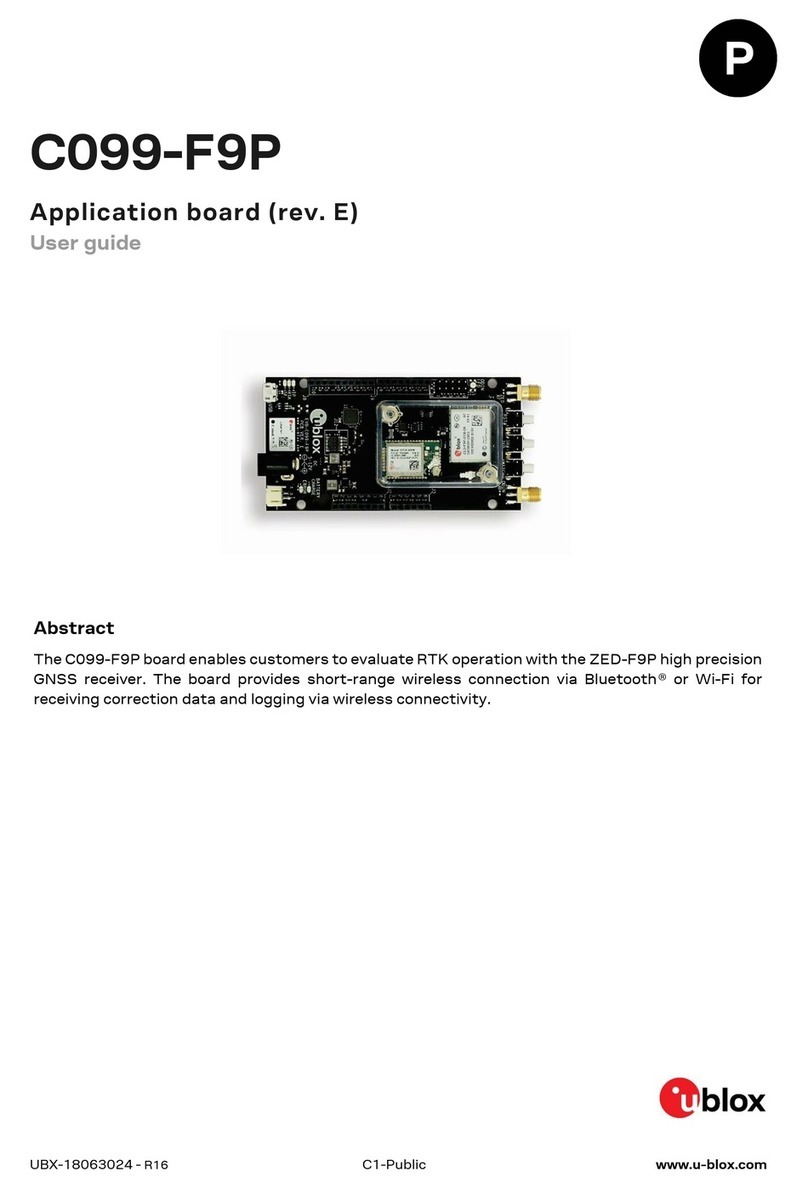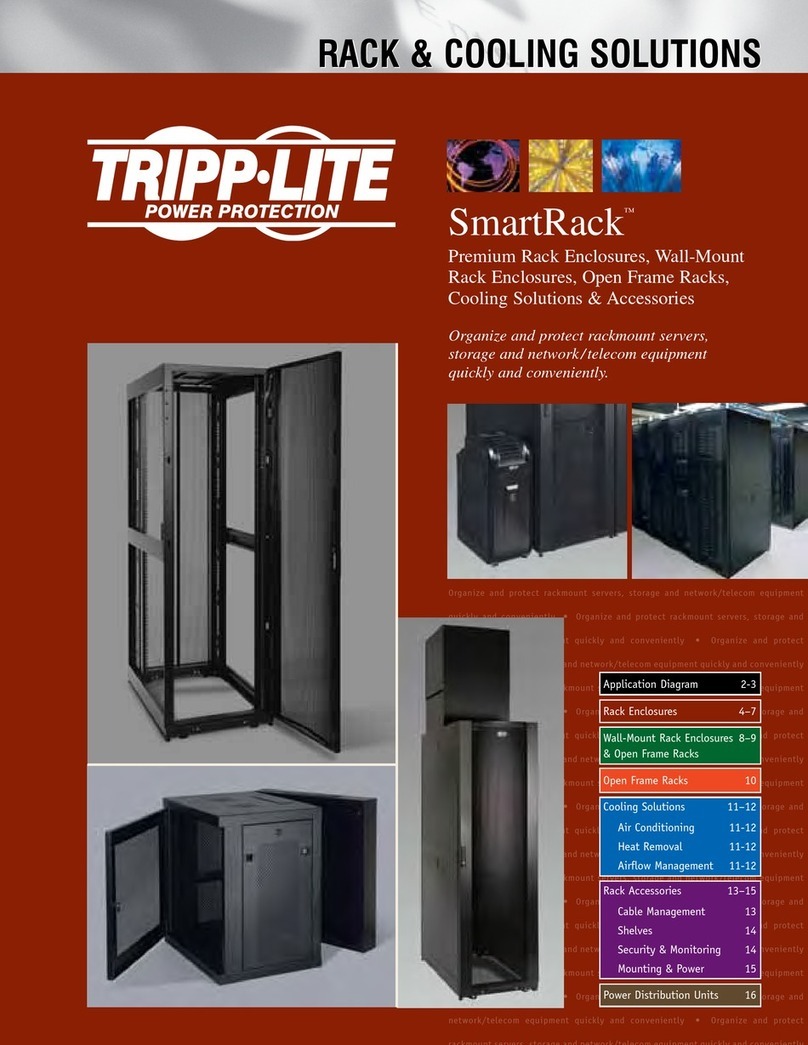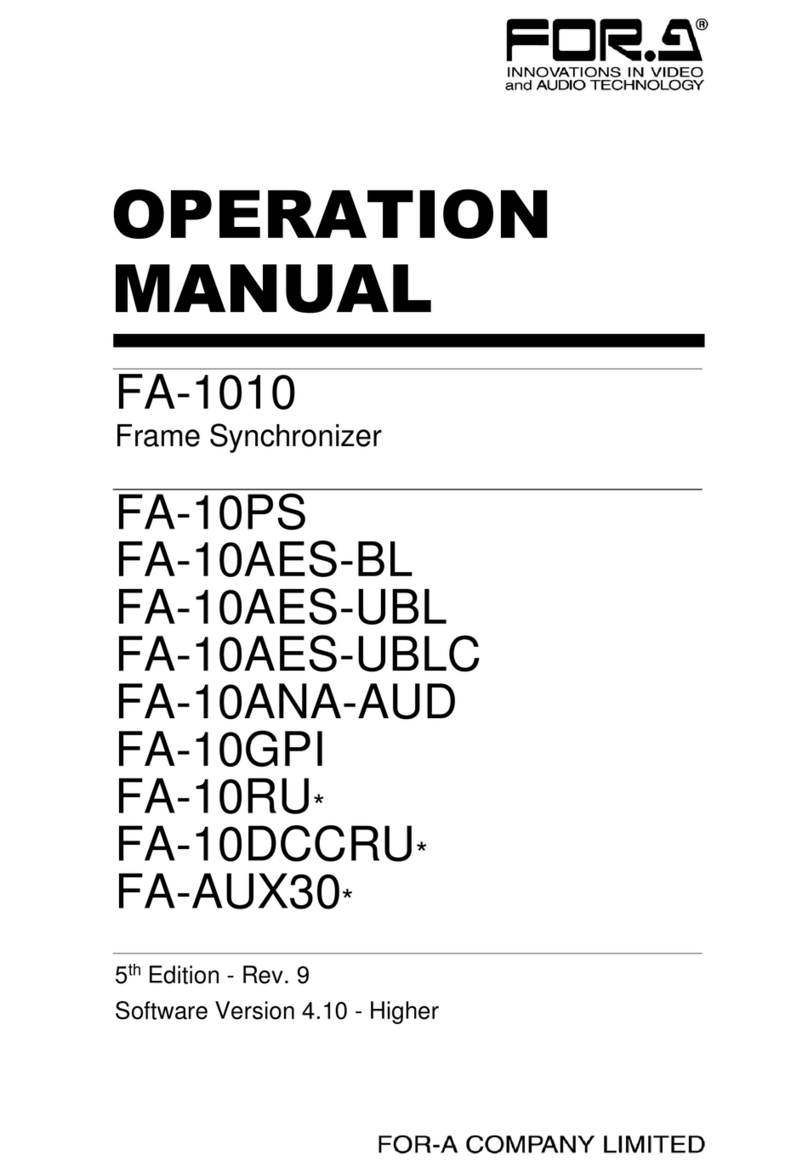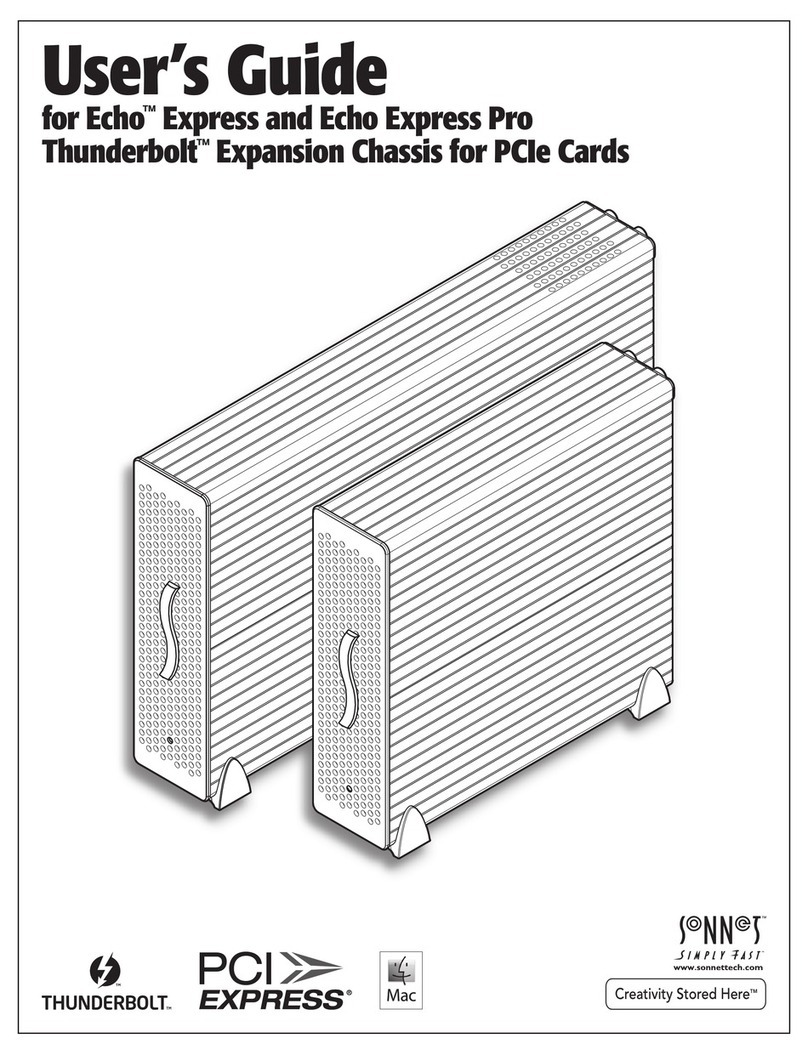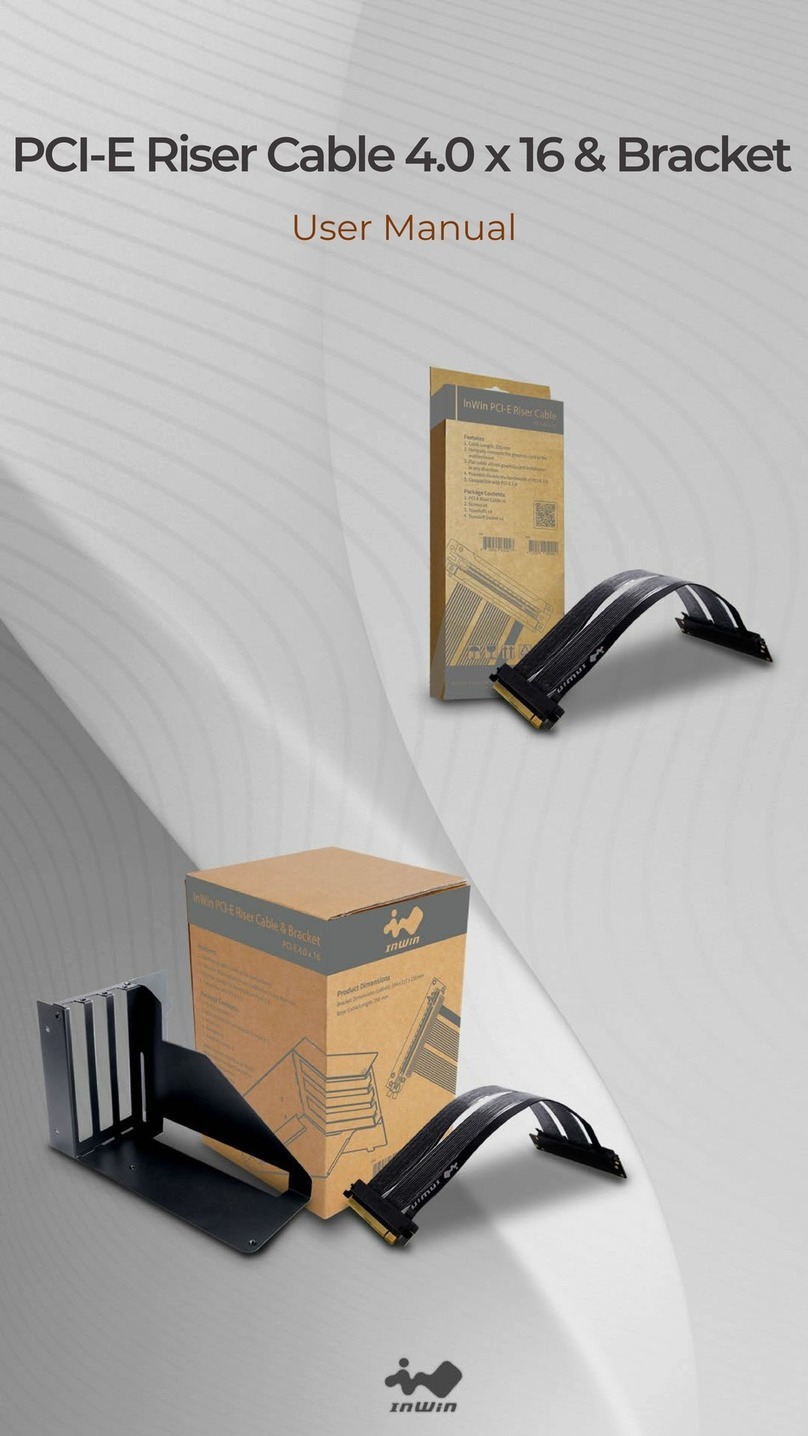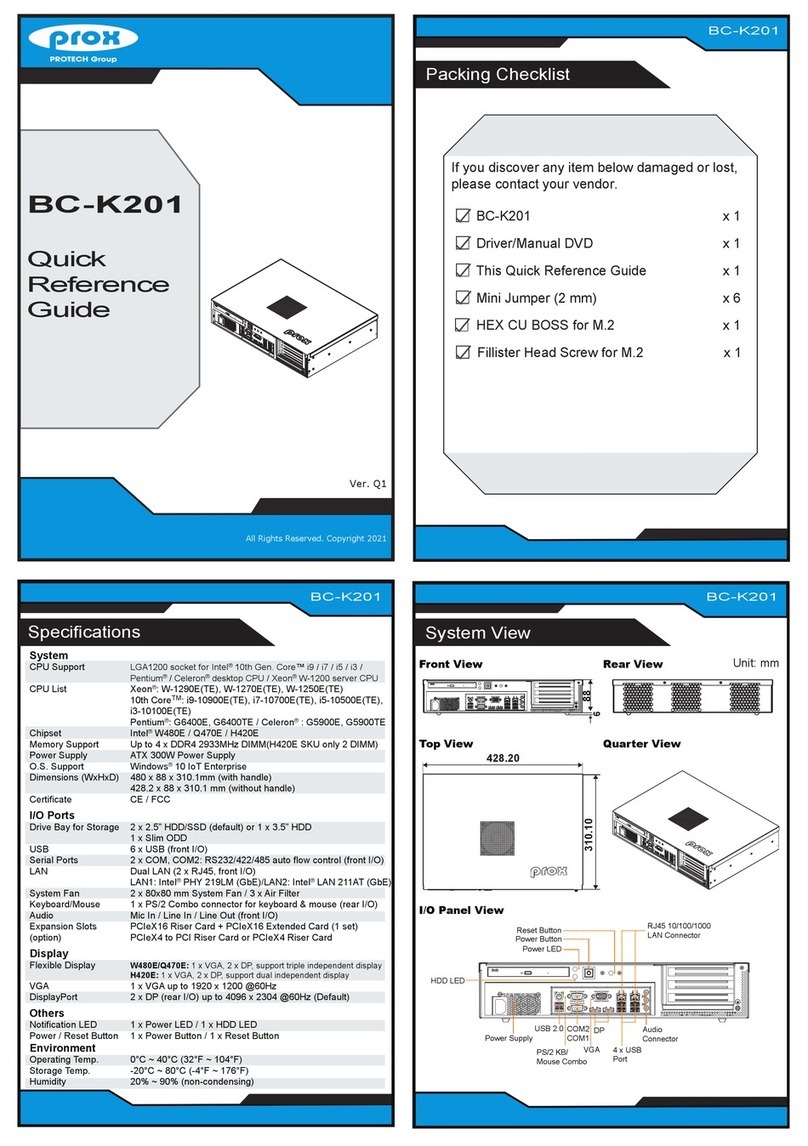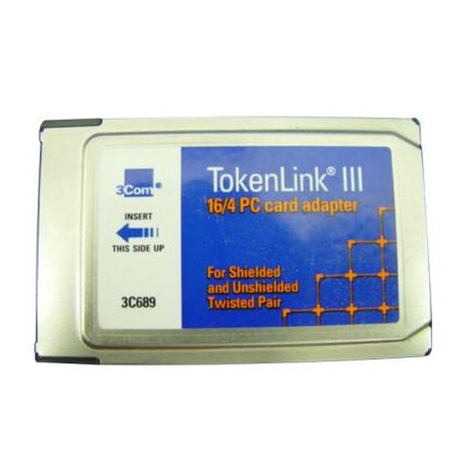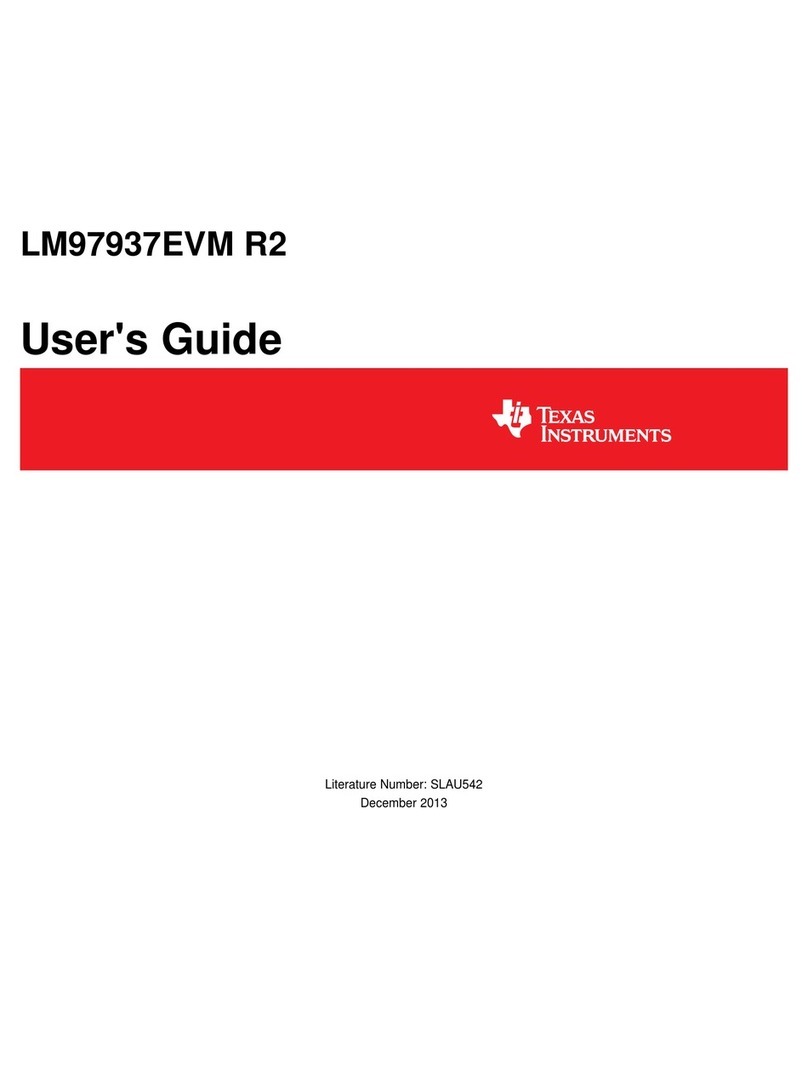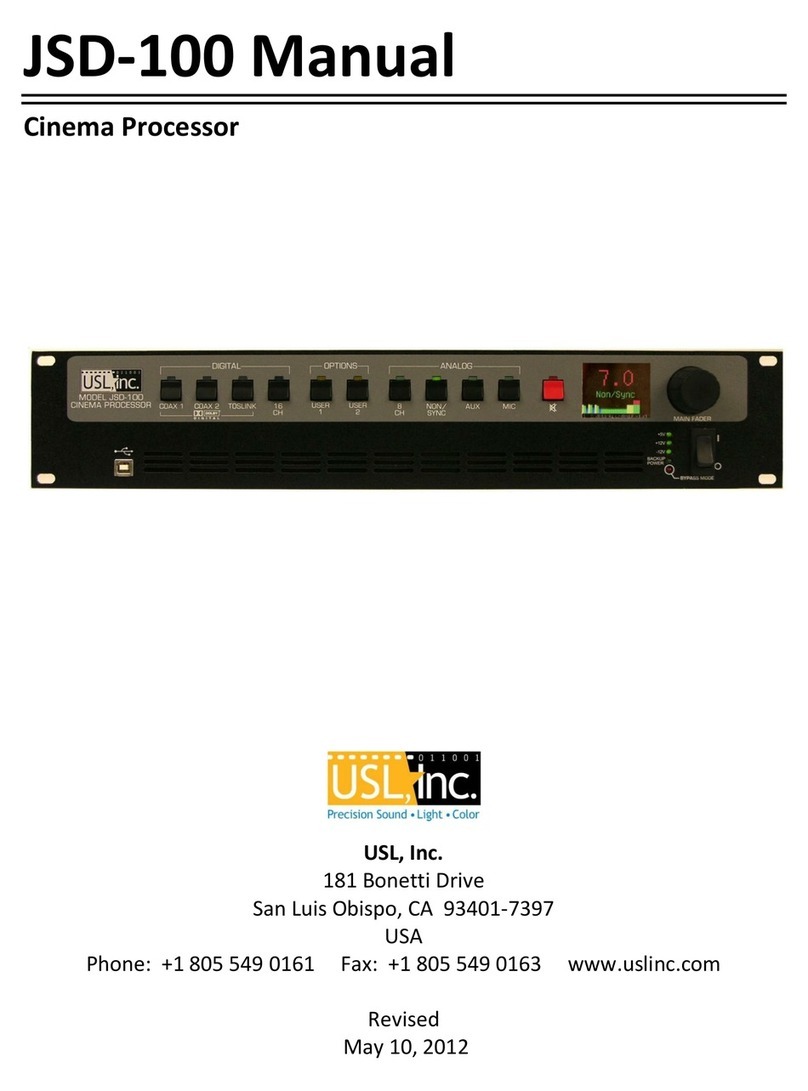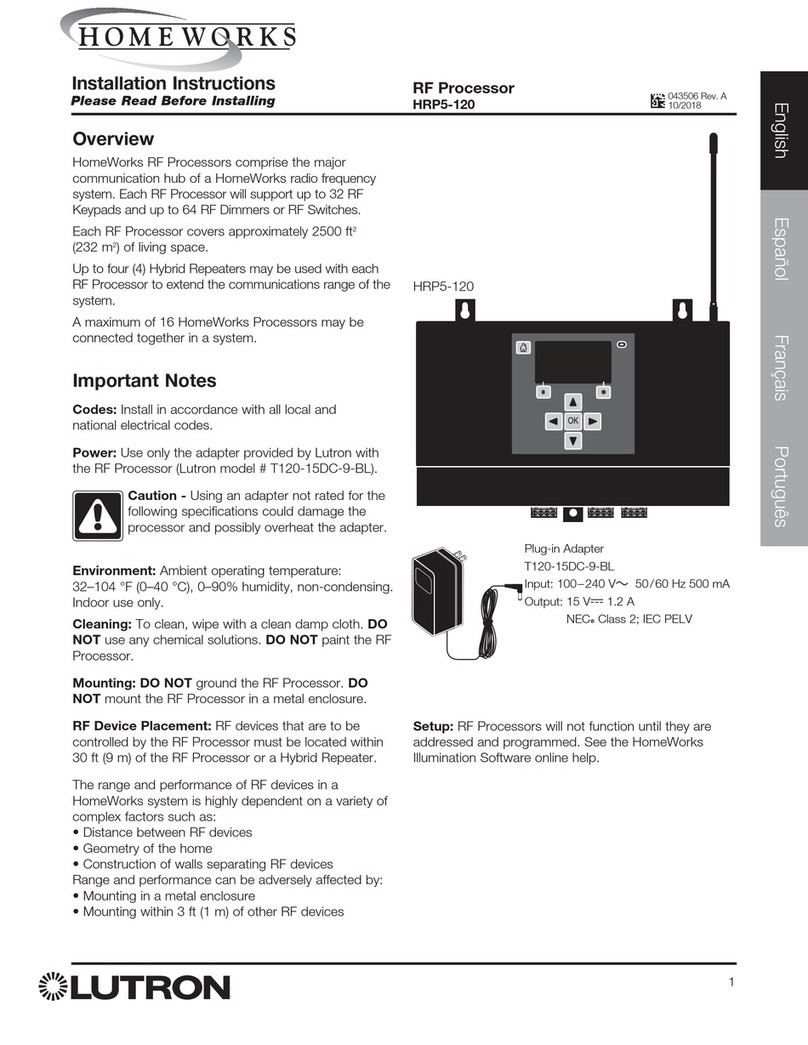AOpen AP61 User manual

AP61
User’s Guide

Copyright
Copyright Ó 1996 by this company. All rights reserved. No part of
this publication may be reproduced, transmitted, transcribed, stored in
a retrieval system, or translated into any language or computer
language, in any form or by any means, electronic, mechanical,
magnetic, optical, manual or otherwise, without the prior written
permission of this company.
ii

Disclaimer
This company ma es no representations or warranties, either
expressed or implied, with respect to the contents hereof and
specifically disclaims any warranties, merchantability or fitness for any
particular purpose. Any software described in this manual is sold or
licensed "as is". Should the programs prove defective following their
purchase, the buyer (and not this company, its distributor, or its
dealer) assumes the entire cost of all necessary servicing, repair, and
any incidental or consequential damages resulting from any defect in
the software. Further, this company reserves the right to revise this
publication and to ma e changes from time to time in the contents
hereof without obligation to notify any person of such revision or
changes.
Intel and Pentium are registered trademar s of Intel Corporation.
XT/AT is a registered trademar of International Business Machines Corporation.
Award is a registered trademar of Award Software, Inc.
iii

Copyright
Other brand and product names are trademar s and/or registered trademar s of their
respective holders.
iv

FCC Statement
FCC Class B Radio Frequency
Interference Statement
Note
This equipment has been tested and found to comply with the limits
for a Class B digital device, pursuant to Part 15 of FCC Rules. These
limits are designed to provide reasonable protection against harmful
interference in a residential installation. This equipment generates,
uses, and can radiate radio frequency energy and, if not installed and
used in accordance with the instructions, may cause harmful
interference to radio communications. However, there is no
guarantee that interference will not occur in a particular installation. If
this equipment does cause harmful interference to radio or television
reception, which can be determined by turning the equipment off and
on, the user is encouraged to try to correct the interference by one or
more of the following measures:
1. Reorient or relocate the receiving antenna.
2. Increase the separation between the equipment and receiver.
3. Connect the equipment into an outlet on a circuit different from that
to which the receiver is connected.
4. Consult the dealer or an experienced radio/television technician for
help.
Notice 1
The changes or modifications not expressly approved by the party
responsible for compliance could void the user's authority to operate
the equipment.
Notice 2
Shielded interface cables, if any, must be used in order to comply with
emission limits.
iv

About this Manual
Purpose and Scope
This manual tells how to install and configure the system board.
Organization
This manual consists of three chapters and one appendix.
Chapter 1, Features, covers the specifications, layout, and components of
the system board.
Chapter 2, Hardware Setup, tells how to set the jumpers, upgrade the CPU
and the system memory, install the system board and add expansion cards.
Chapter 3, Award BIOS, explains the system BIOS and tells how to
configure the system by setting the BIOS parameters.
Appendix A, Jumper Summary, gives you a tabular summary of the jumper
settings discussed in Chapter 2.
v

About this Manual
Conventions
The following conventions are used in this manual:
Text entered by user,
default settings,
recommended selections
Represent text input by the user,
default settings and recommended
selections
message displayed Denotes actual messages that appear
on screen
a, e, s, etc Represent the actual eys that you
have to press on the eyboard.
NOTE
Gives bits and pieces of additional
information related to the current topic.
WARNING
Alerts you to any damage that might
result from doing or not doing specific
actions.
CAUTION
Suggests precautionary measures to
avoid potential hardware or software
problems.
IMPORTANT
Reminds you to ta e specific action
relevant to the accomplishment of the
procedure at hand.
TIP
Tells how to accomplish a procedure
with minimum steps through little
shortcuts.
vi

Table of Contents
1 Features
Specifications.......................................................1-2
Board Layout.......................................................1-3
System Board Parts.............................................1-4
Microprocessor............................................1-4
ASICs 1-4
BIOS 1-5
Expansion Slots..........................................1-5
DRAM Soc ets............................................1-5
Two-channel PCI Mode 4 IDE Controller. . .1-5
Super I/O Controller....................................1-6
Keyboard Connector...................................1-6
Second-level Cache....................................1-6
2 Hardware Setup
ESD Precautions.................................................2-1
Installing a Microprocessor..................................2-2
Upgrading the Microprocessor............................2-4
Jumper Settings...................................................2-5
Selecting the CPU Type.............................2-6
Selecting the CPU Frequency....................2-7
vii

Table of Contents
Changing the Voltage Regulator Module
(VRM) Voltage Setting................................2-8
Selecting the Flash ROM BIOS Mode........2-9
Clearing the CMOS.....................................2-9
Enabling the Enhanced IDE Function......2-10
Enabling the Super I/O Chip.....................2-10
Selecting the DMA Channel......................2-11
Enabling the PS/2 Mouse (optional).........2-11
Memory Configuration.......................................2-12
Installing a SIMM......................................2-14
Removing a SIMM....................................2-15
Voltage Regulator Module.................................2-16
Installing a VRM........................................2-16
Removing a VRM......................................2-17
Connectors........................................................2-18
Multifunction Connector............................2-18
Keyboard Connector.................................2-20
PS/2 Mouse Connector.............................2-20
Power Connector......................................2-21
Fan Connector..........................................2-21
Installation..........................................................2-22
Installing the System Board......................2-22
Installing Expansion Boards.....................2-23
viii

Table of Contents
3 Award BIOS
Award BIOS Setup Main Menu...........................3-1
Standard CMOS Setup........................................3-2
Date 3-3
Time 3-3
Hard Dis s...................................................3-3
Floppy Drive Types.....................................3-4
Video 3-4
Error Halt.....................................................3-5
Memory.......................................................3-5
BIOS Features Setup..........................................3-7
Virus Warning..............................................3-7
CPU Internal Cache/External Cache..........3-8
Quic Power-on Self-test............................3-8
Boot Sequence...........................................3-8
Swap Floppy Drive......................................3-8
Boot-up Floppy See ..................................3-9
Boot-up NumLoc Status............................3-9
Boot-up System Speed...............................3-9
IDE HDD Bloc Mode.................................3-9
Gate A20 Option.......................................3-10
Typematic Rate Setting............................3-10
Typematic Rate.........................................3-10
ix

Table of Contents
Typematic Delay.......................................3-10
Security Option.........................................3-11
IDE Second Channel Control...................3-11
PCI/VGA Palette Snoop............................3-11
Video BIOS Shadow.................................3-11
C8000-CBFFF Shadow to
DC000-DFFFF Shadow.................3-12
Chipset Features Setup.....................................3-13
Auto-configuration Function......................3-13
Power Management Setup................................3-14
Power Management..................................3-15
PM Control by APM..................................3-15
Video Off Option.......................................3-15
Video Off Method......................................3-16
Suspend Switch........................................3-16
PM Timers.................................................3-17
PM Events.................................................3-17
IRQ3 to IRQ15..........................................3-17
PCI Configuration Setup....................................3-18
Slots 1, 2, 3 and 4 Using INT#..................3-19
Available IRQs..........................................3-19
PCI IRQ Activated By...............................3-19
PCI IDE 2nd Channel...............................3-19
PCI IDE IRQ Map To................................3-20
x

Table of Contents
Primary and Secondary IDE INT#............3-20
Load BIOS Defaults...........................................3-21
Load Setup Defaults..........................................3-22
Password Setting...............................................3-23
IDE HDD Auto-detection....................................3-24
Save & Exit Setup..............................................3-25
Exit without Saving............................................3-25
Appendix A Jumper Summary
xi

Chapter
Features 1
The AP61 is a high-performance system board that utilizes an Intel
PentiumÒ Pro (P6) processor running at 15 , 166, 18 , 2 MHz or
faster. It supports the PCI/ISA architecture and integrates the Intel
45 KX PCIset to improve system performance. This feature
conforms to the power-saving standards of the U.S. Environmental
Protection Agency (EPA) Energy Star program.
The system memory is expandable to 256 MB. It does not have an
onboard second-level cache since it is already included in the CPU
architecture.
The motherboard also incorporates a super I/O controller and a two-
channel PCI mode 4 IDE controller to further enhance system
performance. The board measures 22 mm x 33 mm (full baby-AT
size).
User’s Guide 1-1

Features
Specifications
Microprocessor Intel Pentium Pro (P6)
15 /166/18 /2 MHz or faster
Memory 256 MB (maximum)
SIMM Sockets Four 72-pin, 32-bit
ASICs Intel 45 KX PCIset
Bus Architecture ISA, PCI
Expansion Slots Three ISA and four PCI slots
Ports One parallel port (SPP/ECP/EPP)
Two serial ports (UART 16C55 )
Two-channel PCI mode 4 IDE ports
One floppy disk drive port
(1.2/1.44/2.88 MB)
Secondary Cache Built in CPU (256 KB or 512 KB)
BIOS Award
TC Dallas 12887A
Board Size 22 mm x 33 mm (full baby-AT size)
1-2 User’s Guide

Features
Board Layout
1 Serial port (COM2) 16 VRM connector
2 Serial port (COM1) 17 Voltage regulator ith heatsink
3 Parallel port 18 Intel 82453 ASIC
4 IDE2 connector 19 Clock buffer
5 IDE1 connector 20 Intel 82454 ASIC
6 FDD connector 21 Intel 82379AB PCI/ISA
7 Po er connector controller
8 72-pin SIMM sockets 22 ISA slots
9 DRAM buffers 23 RTC/battery
10 Clock generator 24 Keyboard controller
11 Intel 82452 ASIC 25 Super I/O controller
12 Multifunction connector 26 PCI slots
13 ZIF-type CPU socket 27 PS/2 mouse connector
14 HDD LED connector 28 AT-keyboard connector
15 T o-pin fan connector
User’s Guide 1-3

Features
System Board Parts
Microprocessor
The AP61 system board uses an Intel Pentium Pro (P6) processor
running at speeds of 15 , 166, 18 , 2 MHz or faster. Chapter 2
gives details on how to install and upgrade the Pentium processor.
ASICs
The ASICs (application-specific integrated circuits) onboard are the
Intel 82454, 82453, 82452, 82451 and Intel 82379. The Intel 82454
acts as the PCI/ISA-bus bridge that translates the PCI bus cycles. It
comes in a ball-grid array (BGA) packaging.
The Intel 82453 functions as the memory controller that supports both
the one-way and two-way interleave configurations.
The Intel 82452 serves as the memory controller data path that offers
64-bit DRAM and 32-bit PCI bus interfaces. Similar to 82454, this
chip also comes in a BGA packaging. It supports the Error Correcting
Code (ECC) feature that enables the system to correct the detected
data errors.
The Intel 82451 acts as the memory interface and the DRAM data bus
buffer.
The Intel 82379 operates as the PCI/ISA I/O controller that allows PCI
and ISA master/slave interfaces.
1-4 User’s Guide

Features
BIOS
The board supports the Award BIOS (basic input-output system)
which resides in the flash ROM chip. The BIOS contains the program
that performs the power-on self-tests (POST) upon booting. During
POST, this program activates the peripheral devices, tests onboard
memory, and prepares the system for operation. Chapter 3 gives
more information on the Award BIOS.
Expansion Slots
The board expansion slots consist of three ISA-AT and four PCI slots.
These expansion slots are the parallel bars on the system board.
There are rows of golden pins inside each slot that serve as a clutch
to secure the contacts of expansion boards.
The PCI slots accept three bus master (PCI slots 1, 2, 3) and one
slave PCI (PCI slot 4) devices. Chapter 2 tells how to install the
expansion boards.
DRAM Sockets
The system board has four 72-pin DRAM sockets that expand system
memory to a maximum of 256 MB. These sockets accept single- and
double-density single in-line memory modules (SIMMs). Chapter 2
discusses the different memory configurations available.
User’s Guide 1-5

Features
Two-channel PCI Mode 4 IDE Controller
The board utilizes the enhanced integrated drive electronics (IDE)
controller that improves data transfer rate. It also allows the system
to support four IDE devices, including hard disks with more than 528
MB capacity. This feature offers users increased data storage.
S per I/O Controller
The onboard super I/O controller chip supports two UART
1645 /1655 -compatible serial ports and a parallel port (SPP, EPP,
ECP)1. It also accommodates 1.2-MB, 1.44-MB, and 2.88-MB disk
drives allowing full-range access to 5.25-inch drives with 36 -KB or
1.2-MB format, and 3.5-inch drives with 72 -KB, 1.44-MB or 2.88-MB
format.
Keyboard Connector
The keyboard connector at the rear of the system board accepts any
AT-compatible keyboard. PS/2 keyboard and mouse connectors are
optional.
Second-level Cache
The system board does not have an onboard second-level cache
since it is already integrated in the Intel PentiumÒ Pro (P6) processor.
The processor comes with either 256-KB or 512-KB L2 cache size.
1 SPP: Standard Parallel Port
EPP: Enhanced Parallel Port (IEEE 1284 compliant)
ECP: Extended Capabilities Port (IEEE 1284 compliant)
1-6 User’s Guide

Features
User’s Guide 1-7

Chapter
Hardware Setup 2
This chapter tells how to install the CPU and other components, set
jumpers, configure system memory, install the system board, and add
expansion boards.
ESD Precautions
Electrostatic discharge (E D) can damage your processor, disk
drives, expansion boards, and other components. Always observe
the following precautions before you install a system component.
1. Do not remove a component from its protective packaging until
you are ready to install it.
2. Wear a wrist grounding strap and attach it to a metal part of the
system unit before handling components. If a wrist strap is not
available, maintain contact with the system unit throughout any
procedure requiring E D protection.
User’s Guide 2-1
Table of contents
Other AOpen Computer Hardware manuals
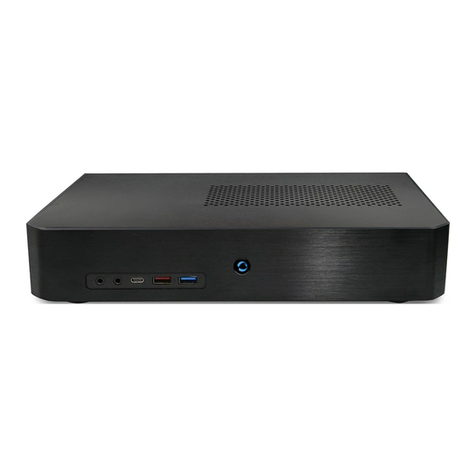
AOpen
AOpen DEV7610 User manual
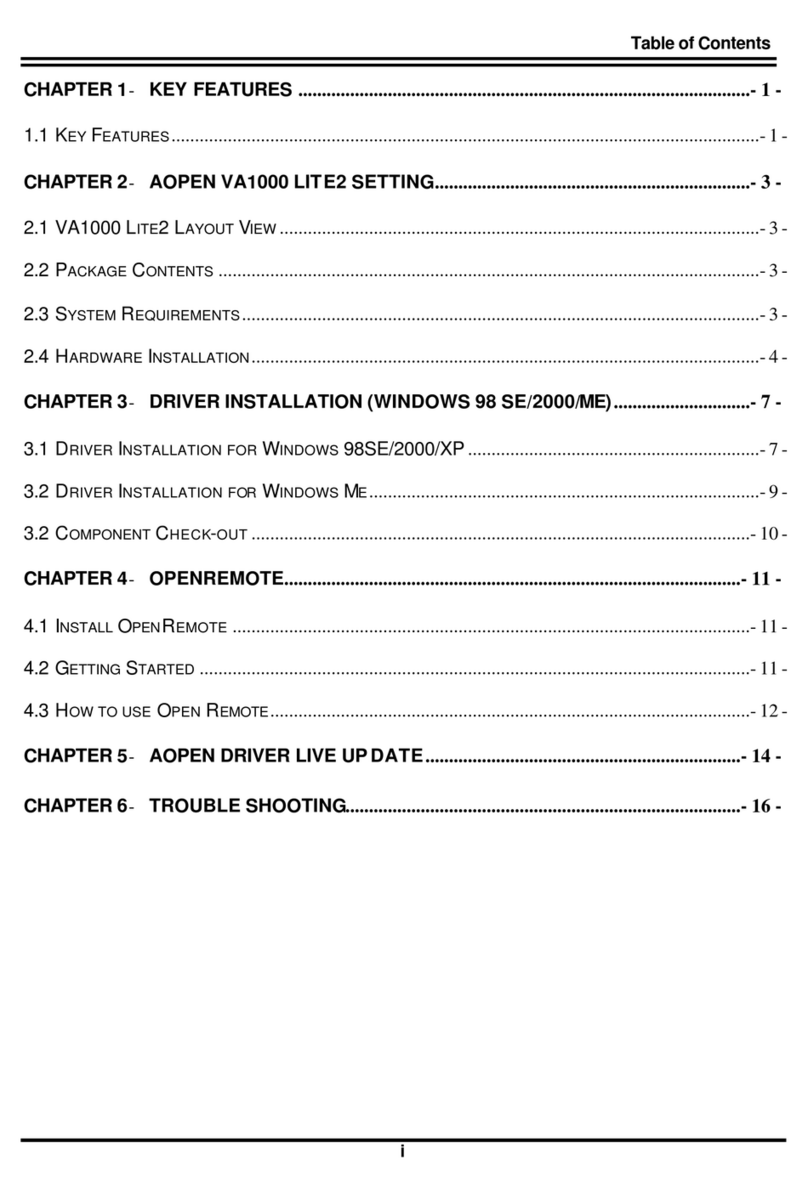
AOpen
AOpen VA1000 Lite2 User manual
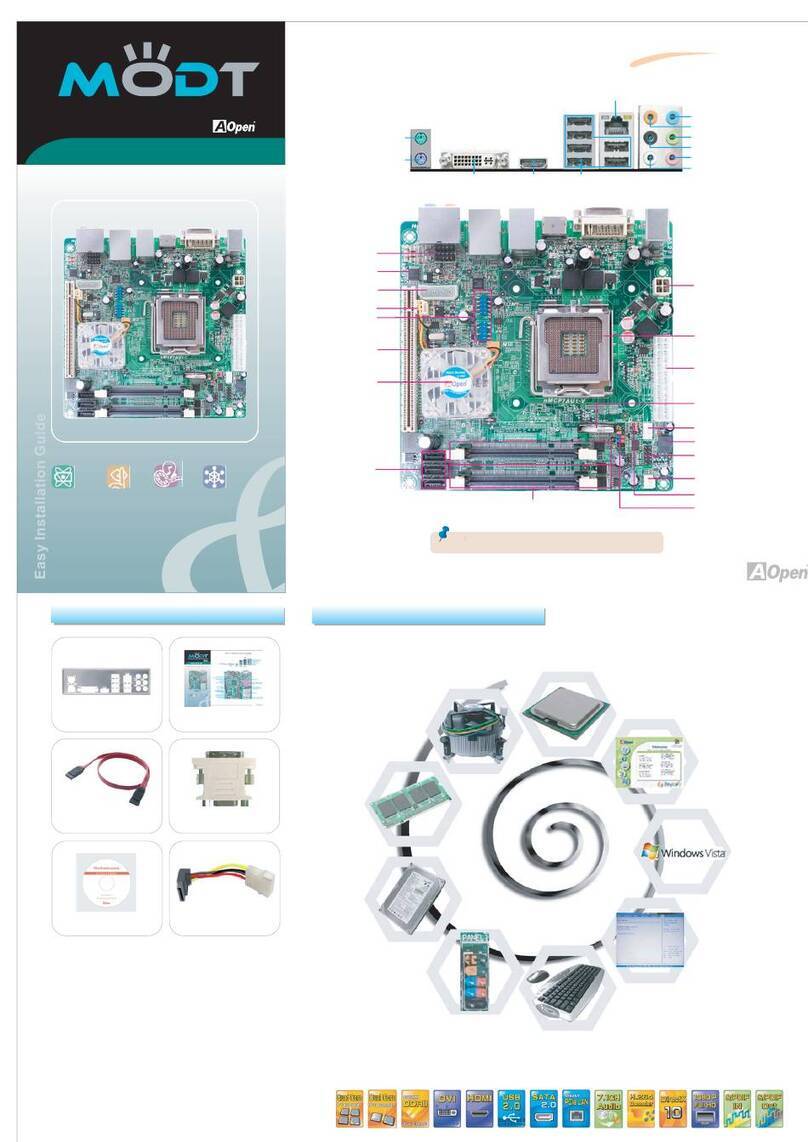
AOpen
AOpen Modt nMCP7AUt-V Series User manual
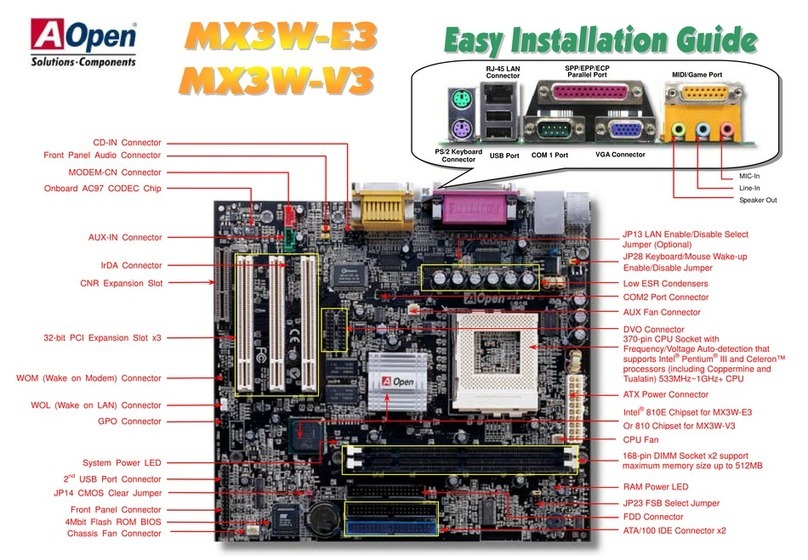
AOpen
AOpen MX3W-E3 Datasheet

AOpen
AOpen i55HMt-HD User manual
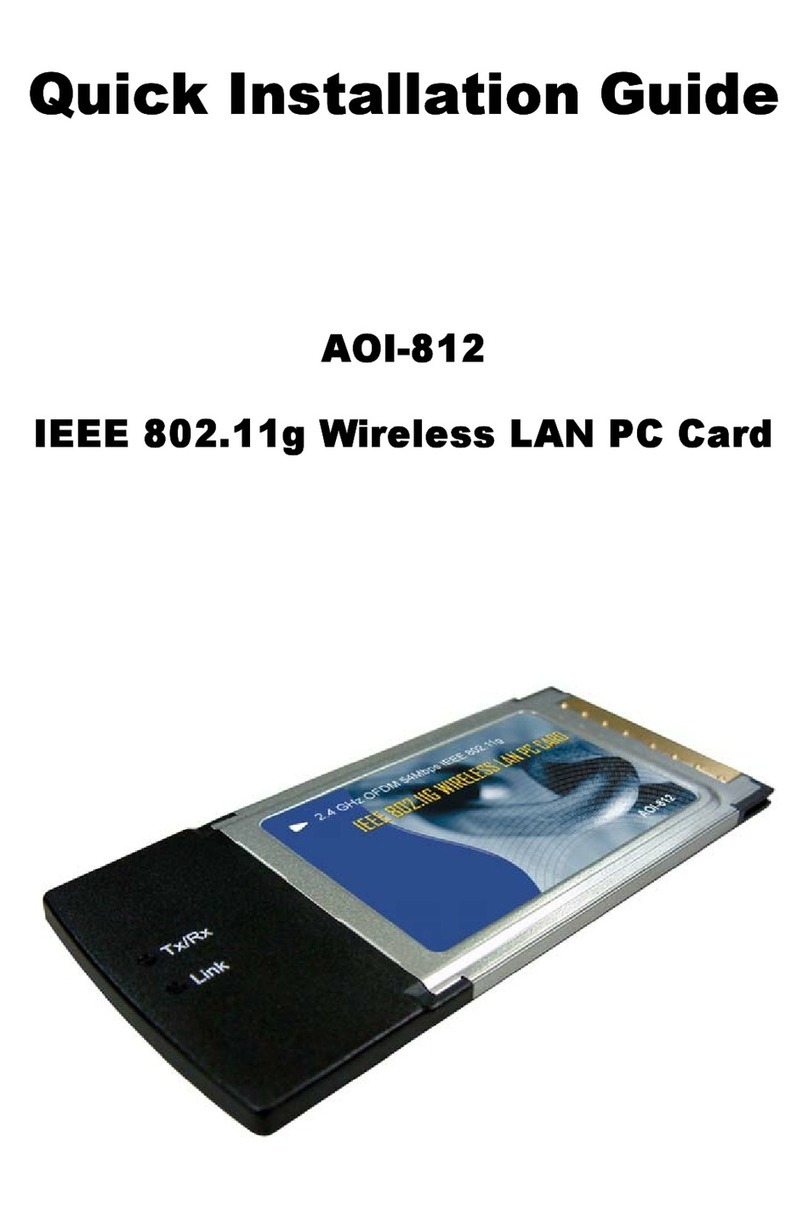
AOpen
AOpen AOI-812 User manual
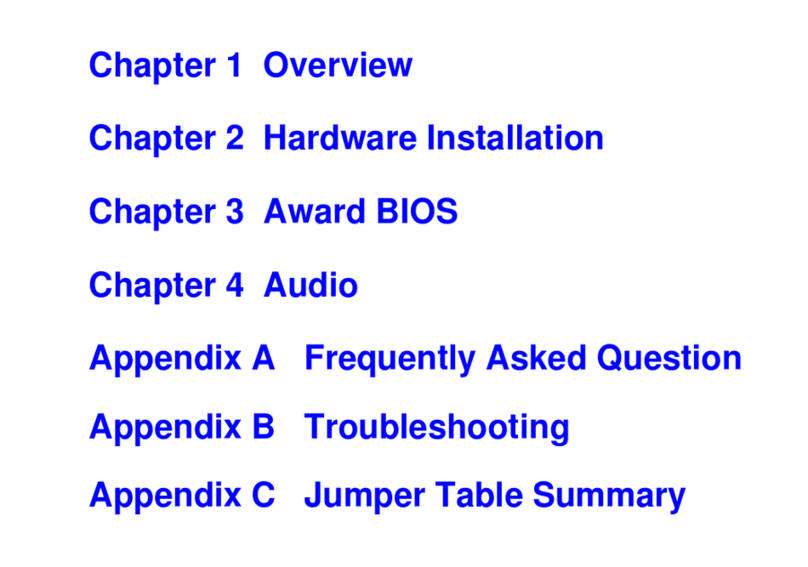
AOpen
AOpen MX6E PLUS User manual
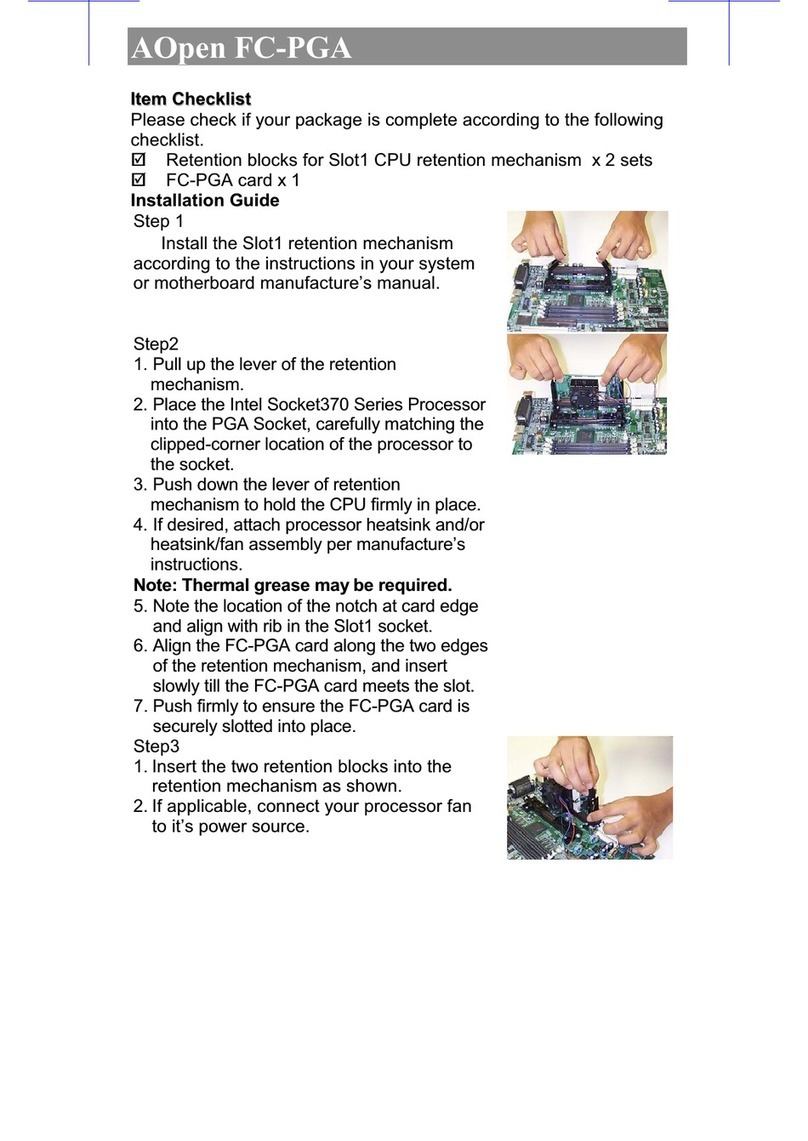
AOpen
AOpen FC-PGA User manual

AOpen
AOpen DP5 User manual

AOpen
AOpen AP41 User manual
